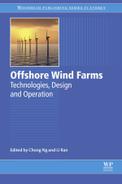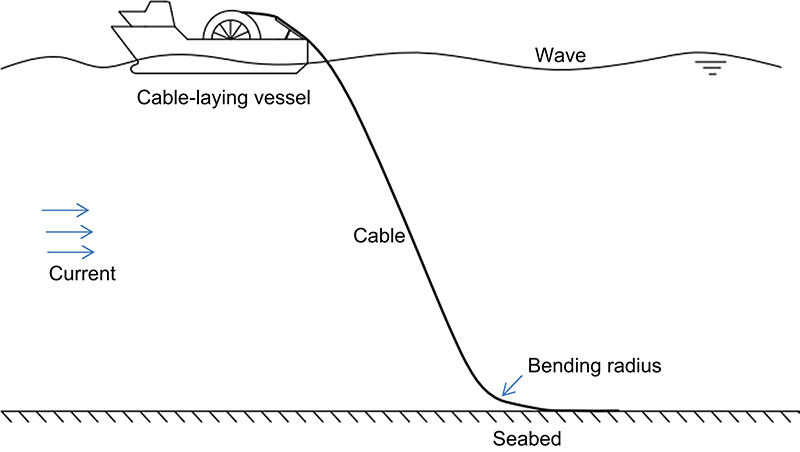Cabling to connect offshore wind turbines to onshore facilities
Abstract
This chapter presents a review of general aspects and practical challenges of subsea power cables for offshore wind farm applications. Interarray, interplatform and export cables are key components which require careful analysis and design in view of their mechanical properties, electrical voltages and installation methodologies. Some lifecycle cost savings related to offshore cables are discussed, including the use of higher-voltage cables, the layout optimization of interarray cables, the post-lay burial activities, the cable burial depth identifications and the J-tubeless interfaces. For offshore floating wind turbines and substations in deeper waters, the dynamic cable concepts are proposed along with discussion of some environmental impacts due to waves, currents and on-bottom dynamic stability. The outlook for offshore wind farm cables is provided, with a list of potential innovative cabling technologies of current industrial interest.
Keywords
Cable installation; Cabling technology; Dynamic cable; Export cable; Interarray cable; J-tube; Offshore wind farm; Renewable energy; Wind turbine13.1. Introduction
13.2. Offshore wind farm cables
13.2.1. Interarray cables

Table 13.1
Example of interarray cable properties
| Details | Nominal cross-sectional area of conductor (mm2) | |||
| 95 | 120 | 185 | 240 | |
| Outer diameter (mm) | 104 | 106 | 114 | 119 |
| Weight (kg/m) | 16 | 18 | 21 | 23 |

Table 13.2
Example of interplatform cable properties
| Details | Nominal cross-sectional area of conductor (mm2) | |||
| 300 | 400 | 500 | 800 | |
| Outer diameter (mm) | 167 | 168 | 176 | 194 |
| Weight (kg/m) | 48 | 51 | 58 | 74 |

Table 13.3
Example of export cable properties
| Details | Nominal cross-sectional area of conductor (mm2) | |||
| 300 | 800 | 2000 | 3000 | |
| Outer diameter (mm) | 102 | 118 | 140 | 155 |
| Weight (kg/m) | 22 | 33 | 53 | 70 |

13.2.2. Interplatform cables
13.2.3. Export cables
13.2.4. Cable layout and spacing
13.3. Offshore cable installation, protection and challenges
13.3.1. Preinstallation survey
13.3.2. Cable laying and burial practice
13.3.2.1. Simultaneous lay and burial
13.3.2.2. Post-lay burial
13.3.3. Cable burial depth identification
13.3.4. J-tube and J-tubeless interface
13.4. Dynamic cables for floating wind turbines and substations
13.5. Some mechanical aspects of subsea cables
13.5.1. Catenary configuration
![]() [13.1]
[13.1]
![]() [13.2]
[13.2]
13.5.2. Minimum bending radius (MBR)
![]() [13.3]
[13.3]
![]() [13.4]
[13.4]
![]() [13.5]
[13.5]
13.5.3. Laying tension and hang-off angle
![]() [13.6]
[13.6]
![]() [13.7]
[13.7]
13.5.4. On-bottom stability
13.5.5. Vortex-induced vibration (VIV)
![]() [13.8]
[13.8]
 [13.9]
[13.9]
13.6. Outlook for offshore wind farm cables
Abbreviations
| ASZ | Advisory safety zone |
| BPI | Burial protection index |
| CBRA | Cable burial risk assessment |
| DoL | Depth of lowering |
| Table Continued | |

| EPR | Ethylene propylene rubber |
| HVAC | High voltage alternating current |
| HVDC | High voltage direct current |
| MBR | Minimum bending radius |
| OWA | Offshore wind accelerator |
| ROV | Remotely operated vehicle |
| VIV | Vortex-induced vibration |
| XLPE | Cross-linked polyethylene |










